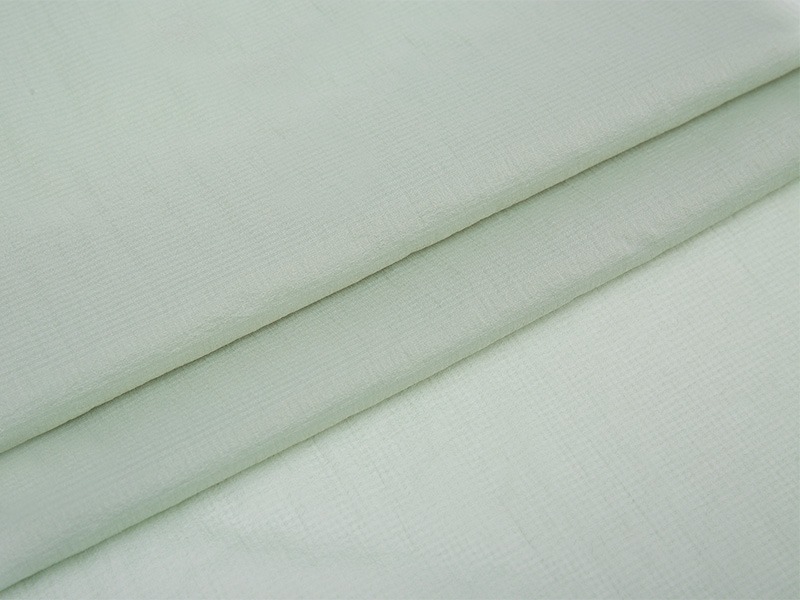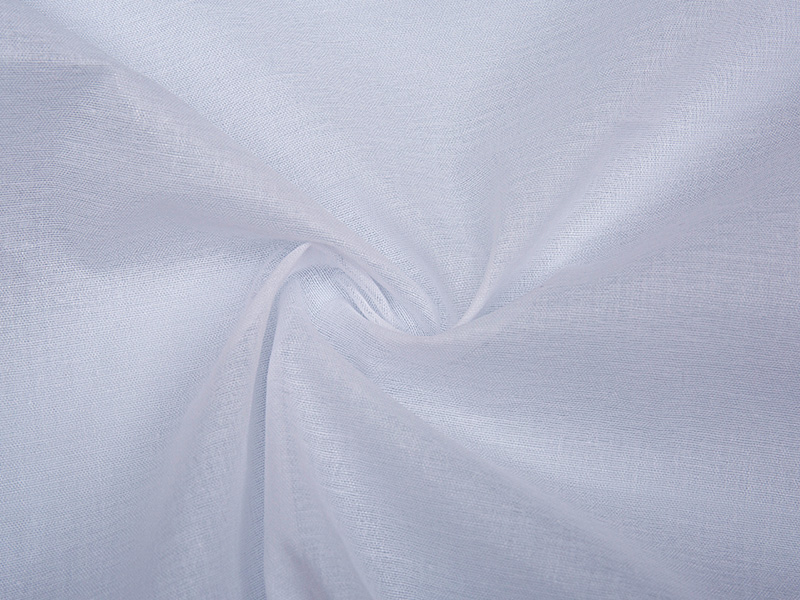High Elasticity Interlining Benefits: Enhance Garment Shape and Longevity
2025-10-22
1. Introduction to High Elasticity Interlining
High Elasticity Interlining is a specialized fabric component designed to provide superior stretch, comfort, and structural support to garments. Its ability to adapt to the natural movement of the wearer makes it an essential material in modern apparel, including sportswear, formal wear, and tailored clothing. By integrating this interlining into garments, manufacturers can significantly enhance the garment's shape, durability, and overall quality. Unlike traditional interlinings, High Elasticity Interlining maintains fabric tension while allowing flexibility, which reduces wear and tear over time and improves the fit for a variety of body types. This makes it a preferred choice for designers who prioritize both aesthetics and functionality in their clothing lines.
- Provides flexible support for stretch fabrics.
- Enhances garment longevity and shape retention.
- Maintains comfort and breathability for the wearer.
- Compatible with a wide range of fabrics, from lightweight silks to structured cotton.
2. Key Benefits of High Elasticity Interlining
Using High Elasticity Interlining in garment construction offers multiple advantages that elevate both performance and aesthetic appeal. One of the main benefits is its ability to enhance garment shape and structure. It prevents sagging and maintains smooth lines, especially in stretch fabrics and tailored apparel. Additionally, this interlining improves durability and resistance to wear, making garments last longer without compromising comfort. Its flexibility allows garments to move naturally with the body, which is particularly important in activewear and formal wear where mobility and fit are crucial. These benefits make it an indispensable component for modern clothing manufacturing, offering both functional and visual improvements.
- Shape retention for long-term wear.
- Enhanced durability for repeated washing and use.
- Flexibility and comfort for active movements.
- Reduces fabric deformation over time.
Enhancing Garment Shape and Structure
One of the core advantages of High Elasticity Interlining is its ability to maintain garment shape. It ensures that stretch fabrics retain their intended form, preventing issues like bagging or distortion. This is particularly important in garments that require precise tailoring, such as suits, dresses, and formal wear.
- Supports structured areas like collars, cuffs, and waistlines.
- Maintains smooth appearance in stretch fabrics.
- Prevents sagging in heavy or fitted garments.
| Garment Type | Traditional Interlining | High Elasticity Interlining |
| Sportswear | Limited stretch, may restrict movement | Full flexibility, supports natural motion |
| Formal Wear | May sag or wrinkle over time | Maintains shape and crisp lines |
| Tailored Garments | Requires frequent adjustments | Long-lasting fit and structure |
Improving Longevity and Wear Resistance
High Elasticity Interlining also significantly enhances garment durability. Its resilient fibers absorb stress from stretching and movement, reducing the chances of tearing or deformation. This is particularly beneficial for garments exposed to frequent wear, such as activewear or daily office attire. The interlining extends the lifecycle of garments while maintaining the original shape and quality.
- Reduces fabric fatigue in high-stress areas.
- Maintains elasticity after multiple washes.
- Improves overall garment lifespan.
Boosting Comfort and Flexibility
Comfort is a crucial consideration in modern apparel, and High Elasticity Interlining excels in this area. By allowing garments to stretch and adapt to body movements, it prevents tightness or restriction. This makes it ideal for sportswear, tailored clothing, and formal attire that requires a balance of structure and flexibility.
- Ensures ease of movement in activewear.
- Prevents discomfort in fitted garments.
- Supports natural posture and body alignment.
3. Applications Based on Garment Types
High Elasticity Interlining is versatile and suitable for a wide range of garments. Different types of interlining are tailored to specific clothing requirements, whether for stretch fabrics, formal wear, lightweight fabrics, activewear, or tailored garments. By selecting the right type, manufacturers can achieve optimal performance and aesthetic results in each application. The five long-tail keywords provide a clear guide to targeting specific fabric and garment needs, ensuring that each garment receives the appropriate support, stretch, and durability.
- Adapts to diverse garment types and designs.
- Optimizes performance in both casual and formal clothing.
- Enhances manufacturing efficiency by using the right interlining type.
High Elasticity Interlining for Stretch Fabrics
Stretch fabrics such as leggings, yoga pants, and fitted tops benefit greatly from High Elasticity Interlining for Stretch Fabrics. It provides essential support without limiting flexibility, maintaining the garment’s intended shape while enhancing comfort.
- Supports fabric structure without adding bulk.
- Prevents sagging in elastic materials.
- Maintains smooth appearance over time.
Best High Elasticity Interlining for Formal Wear
Formal garments require precise shaping and a polished look. Using the Best High Elasticity Interlining for Formal Wear ensures collars, cuffs, and waistlines maintain crisp lines while providing subtle flexibility for comfort.
- Maintains professional appearance in suits and dresses.
- Enhances structure in fitted garments.
- Supports long-term garment durability.
High Elasticity Fusible Interlining for Lightweight Fabrics
Lightweight fabrics such as silk and chiffon require gentle support. High Elasticity Fusible Interlining for Lightweight Fabrics provides reinforcement without adding stiffness, preserving the drape and flow of the material.
- Reinforces delicate areas like collars and plackets.
- Prevents deformation in light garments.
- Maintains soft and flexible texture.
High Stretch Interlining for Activewear Garments
Activewear demands garments that move with the body. High Stretch Interlining for Activewear Garments ensures freedom of movement, comfort, and longevity even under rigorous use.
- Supports high-stress areas like knees and elbows.
- Retains elasticity after repeated stretching.
- Enhances overall garment durability.
High Elasticity Interlining for Tailored Garments
Tailored garments require precision fit and structural integrity. High Elasticity Interlining for Tailored Garments maintains the desired silhouette while allowing slight flexibility for comfort, making it ideal for bespoke suits and shirts.
- Ensures perfect fit in custom garments.
- Supports structured components like lapels and collars.
- Enhances longevity and shape retention.
4. How to Choose the Right High Elasticity Interlining
Selecting the appropriate High Elasticity Interlining involves evaluating fabric type, garment purpose, and desired elasticity. Proper selection ensures optimal performance, comfort, and durability. Consider the differences between fusible and non-fusible options, the weight of the interlining, and the degree of stretch required for each garment application.
- Analyze the fabric compatibility and stretch requirements.
- Choose between fusible and non-fusible interlining based on application.
- Consider garment type, usage frequency, and expected wear.
Factors to Consider
Key factors include fabric weight, elasticity, and purpose of the garment. Lightweight fabrics require gentle support, while heavy or stretch fabrics need robust interlining that maintains shape and comfort.
- Weight and thickness of interlining relative to fabric.
- Elastic recovery rate to ensure long-lasting stretch.
- Ease of sewing and integration into garment production.
Tips for Professional Tailors and Manufacturers
Professional application ensures optimal performance of High Elasticity Interlining. Proper cutting, pressing, and integration into garments maximize benefits while minimizing issues such as bubbling or distortion.
- Follow precise cutting and alignment for accurate fit.
- Use appropriate pressing techniques for fusible types.
- Test garment stretch and recovery before final assembly.
FAQ
What is the difference between high elasticity interlining and traditional interlining?
High Elasticity Interlining provides stretch and flexibility, allowing garments to move naturally with the body, whereas traditional interlining is rigid and may restrict movement. High elasticity versions maintain shape over time and are ideal for stretch fabrics, formal wear, and tailored garments. Traditional interlinings are better suited for non-stretch fabrics where structure is the priority.
Can high elasticity interlining be used in sportswear?
Yes, High Stretch Interlining for Activewear Garments is specifically designed for sports and activewear. It supports high-stress areas, maintains elasticity after repeated use, and enhances comfort and durability, ensuring garments perform well under movement.
How do I choose the best high elasticity interlining for formal wear?
Selecting the Best High Elasticity Interlining for Formal Wear involves evaluating fabric type, garment structure, and desired comfort. Fusible interlinings provide easy application and crisp structure, while non-fusible types offer subtle flexibility for intricate tailoring.
Is fusible interlining suitable for lightweight fabrics?
Yes, High Elasticity Fusible Interlining for Lightweight Fabrics offers reinforcement without adding stiffness. It preserves the drape and softness of delicate materials while enhancing garment structure and longevity.
What are the main benefits of using high elasticity interlining in tailored garments?
High Elasticity Interlining for Tailored Garments ensures precise fit, maintains silhouette, enhances comfort, and increases the durability of bespoke or tailored clothing. It supports structured areas such as collars, lapels, and waistlines while allowing slight movement for comfort.
Contact Us for More Details
Don't hesitate to contact when you need us!


 English
English  中文简体
中文简体 









